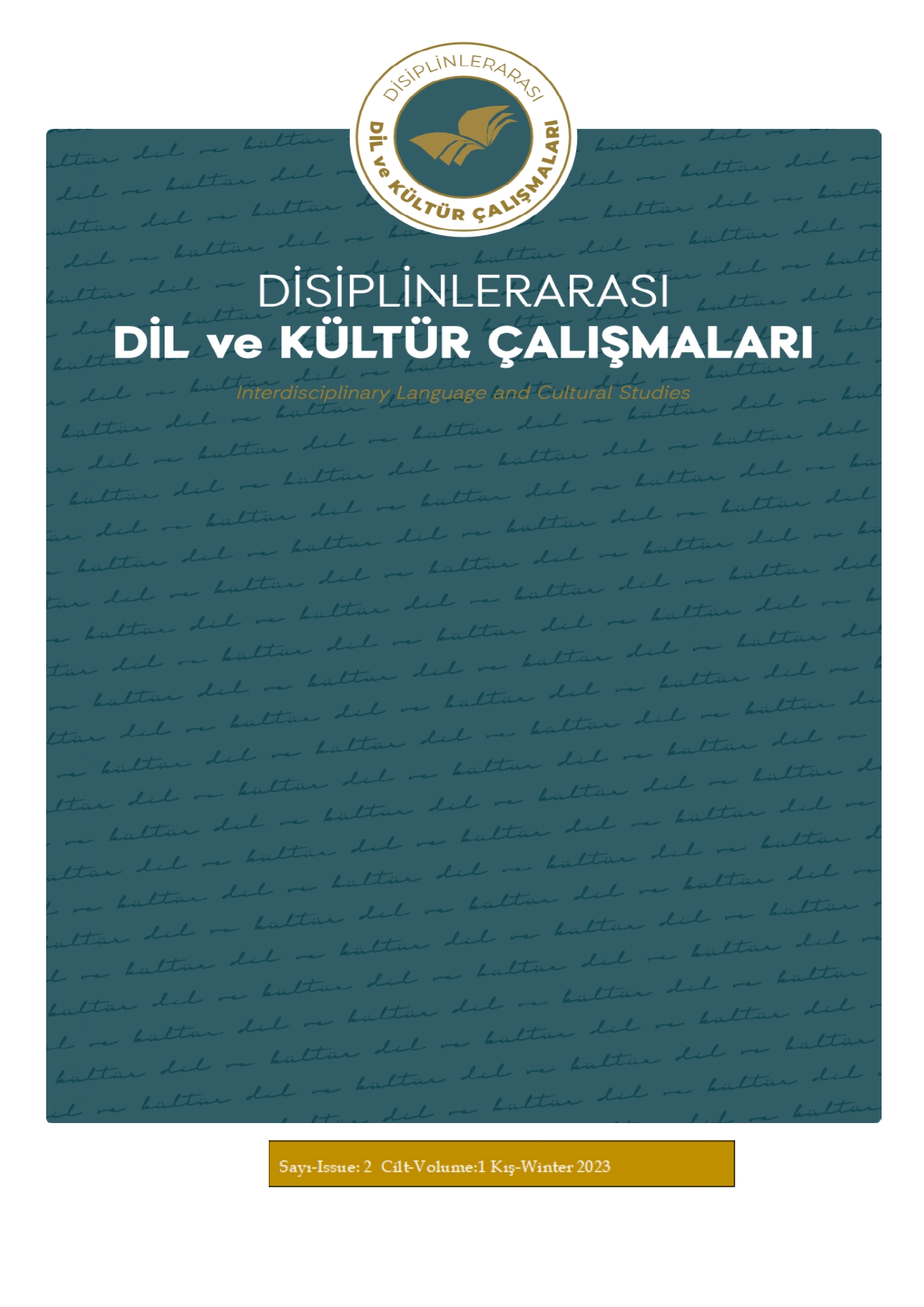An Analysis of Epistemic Modality in Turkish: The Case of –DIr
DOI:
https://doi.org/10.5281/zenodo.10426198Özet
This study describes the epistemic modality in Turkish. Epistemic modality markers can be categorized as morphologic markers, lexical markers, and syntactic markers (Kerimoğlu, 2010). This paper focuses on the morphological marker -DIr and compares its modern version with the Old Anatolian Turkish. With reference to this comparison, the possible reasons for the change of the -DIr marker in time are presented. These reasons are suggested to be pronunciation difficulty or vowel flattering. Furthermore, this study refers to the previous theoretical research and empirical research on -DIr marker in Turkish, especially sentence processing studies, as they present real-time processing of language in order to show current tendencies in studying morphological markers. It concludes that there should be more studies to indicate how processing od –Dir marker occurs and whether there is a developmental pattern in learning this marker.
Referanslar
References
Adamovič, M. (1985). Konjugationgeschichte der türkischen Sprachen. Leiden.
Aksu-Koç, A. (1998, Ağustos). Changes in the basis for children’s assertions: The acquisition of -DIr. IX. International Conference on Turkish Linguistics, Oxford, England.
Aksu-Koc, A., & Alici, D. M. (2000). Understanding sources of beliefs and marking of uncertainty: The child’s theory of evidentiality. In Eve V. Clark (Eds.), In the Proceedings of the Thirtieth Child Language Research Forum. (pp. 123-130).
Altan, A. (2009). Çocuklar İki Farklı Anlamı olan bir Takıyı Öğrenebilir mi? Türkçede -DIr Takısının Edinimi. Journal of Faculty of Letters / Edebiyat Fakultesi Dergisi, 26(2), 33–47.
Arslan, S. (2020). When the owner of the information is unsure: Epistemic uncertainty influences evidentiality processing in Turkish. Lingua, 247, 102989. https://doi.org/10.1016/j.lingua.2020.102989
Brogaard, B., Gatzia, D.E. (2017). Introduction: Epistemic Modals. Topoi 36, 127–130. https://doi.org/10.1007/s11245-016-9374-3
Celce-Murcia, M., Larsen-Freeman, D., & Williams, H. A. (1983). The grammar book: An ESL/EFL teacher's course. Rowley, MA: Newbury House.
Efendioğlu, S., & İşcan, A. (2010). Türkçe ses bilgisi öğretiminde ses olaylarının sınıflandırılması. Atatürk Üniversitesi Türkiyat Araştırmaları Enstitüsü Dergisi, 17(43), 121-143. https://dergipark.org.tr/en/pub/ataunitaed/issue/2882/39772
Ergin, M. (2004). Türk Dil Bilgisi. İstanbul: Bayrak Publishing.
Gabain, A. V. (1988). Eski türkçenin grameri. TDK Publishing.
Göksel, A., & Kerslake, C. (2004). Turkish: A comprehensive grammar. Routledge.
Gülsevin, G. (2007). Eski Anadolu Türkçesinde ekler. Ankara: TDK.
Korkmaz, Z. (2021). Türki̇ye Türkçesi̇ni̇n ses bi̇lgi̇si̇ üzeri̇ne notlar-2. Türk Dil, 830, 4-16.
Kornfilt, J. (1997). Turkish. Routledge.
Kreidler, C. (2002). Introducing English semantics. London: Routledge.
Mifka-Profozic, N. (2017). Processing epistemic modality in a second language: a self-paced reading study. International Review of Applied Linguistics in Language Teaching, 55(3). https://doi.org/10.1515/iral-2017-0107
Özalan, U. (2014). Türk dilinde cevheri ek fiil. [Doctoral Dissertation]. Sakarya University.
Palmer, F. R. (1986). Mood and modality. Cambridge: Cambridge University Press.
Savran, H. (2008). Türk dilinde “+Dır” bildirme eki ve “+Dır” bildirme ekiyle yapılan belirsizlik kelimeleri. Uludağ Üniversitesi Fen-Edebiyat Fakültesi Sosyal Bilimler Dergisi, 9(14), 163-188. https://dergipark.org.tr/en/pub/sosbilder/issue/23093/246730
Savran, H. (2018). Türk Dilinde Yuvarlaklaşma Olayı ve Dudak Uyumu. Türkbilig, 35, 89-96. https://dergipark.org.tr/en/pub/turkbilig/issue/52835/697941
Tosun, İ. (2016). Latifi tezkiresine göre XVI. yüzyil Osmanli Türkçesinde düzlük-yuvarlaklik uyumu. International Periodical for the Languages, Literature and History of Turkish or Turkic Volume, 11(10), 627-648 http://dx.doi.org/10.7827/TurkishStudies.9653
Yılmaz, E., Demir N., & Küçük, M. (2013). Kısas-ı Enbiya. Türk Dil Kurumu Nüshası, Metin-Sözlük-Dizin. Ankara: TDK.
İndir
Yayınlanmış
Nasıl Atıf Yapılır
Sayı
Bölüm
Lisans
Telif Hakkı (c) 2023 Disiplinlerarası Dil ve Kültür Çalışmaları

Bu çalışma Creative Commons Attribution 4.0 International License ile lisanslanmıştır.



